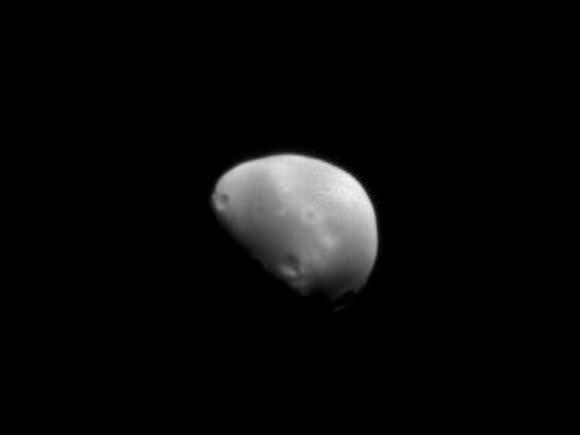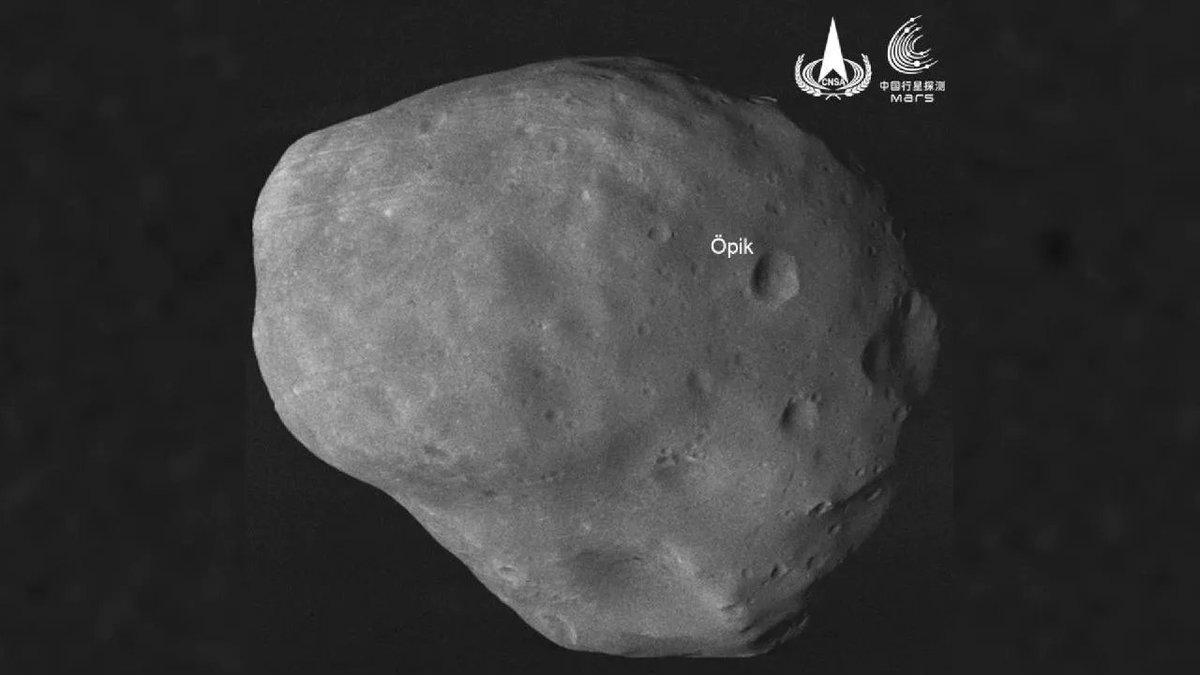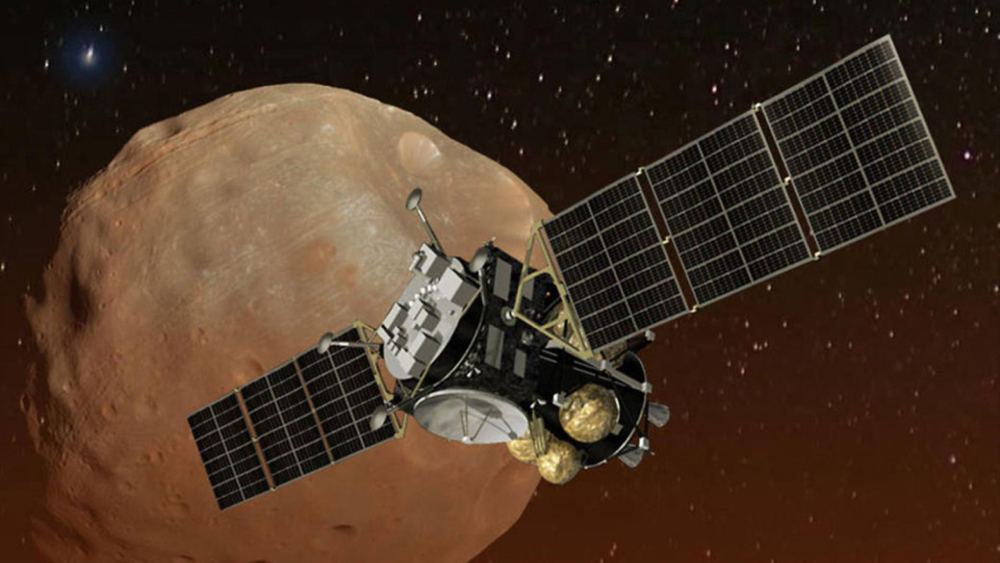The moons of Mars are garnering increased attention, not only because they could provide a view of the solar system’s past but also because they could provide invaluable staging areas for any future human settlement on Mars itself. However, missions specifically designed to visit Phobos, the bigger of the two moons, have met with varying stages of failure. So why not make an inexpensive mission to do so – one that could launch multiple copies of itself if necessary? That’s the idea behind a CubeSat-based mission to Phobos, known as Perseus, which was initially described back in 2020.
Continue reading “A CubeSat Mission to Phobos Could Map Staging Bases for a Mars Landing”Did Mars Once Have a Third, Larger Moon?
We are all familiar with our one Moon but other planets have different numbers of moons; Mercury has none, Jupiter has 95 and Mars has two. A new paper proposes that Mars may actually have had a third larger moon. Why? The red planet has a triaxial shape which means it bulges just like Earth does but along a third axis. The paper suggests a massive moon could have distorted Mars into this shape.
Continue reading “Did Mars Once Have a Third, Larger Moon?”How Mars’ Moon Phobos Captures Our Imaginations

For a small, lumpy chunk of rock that barely reflects any light, Mars’ Moon Phobos draws a lot of attention. Maybe because it’s one of only two moons to orbit the planet, and its origins are unclear. But some of the attention is probably because we have such great images of it.
Continue reading “How Mars’ Moon Phobos Captures Our Imaginations”Perseverance Sees Phobos, Deimos and Mercury Passing in Front of the Sun
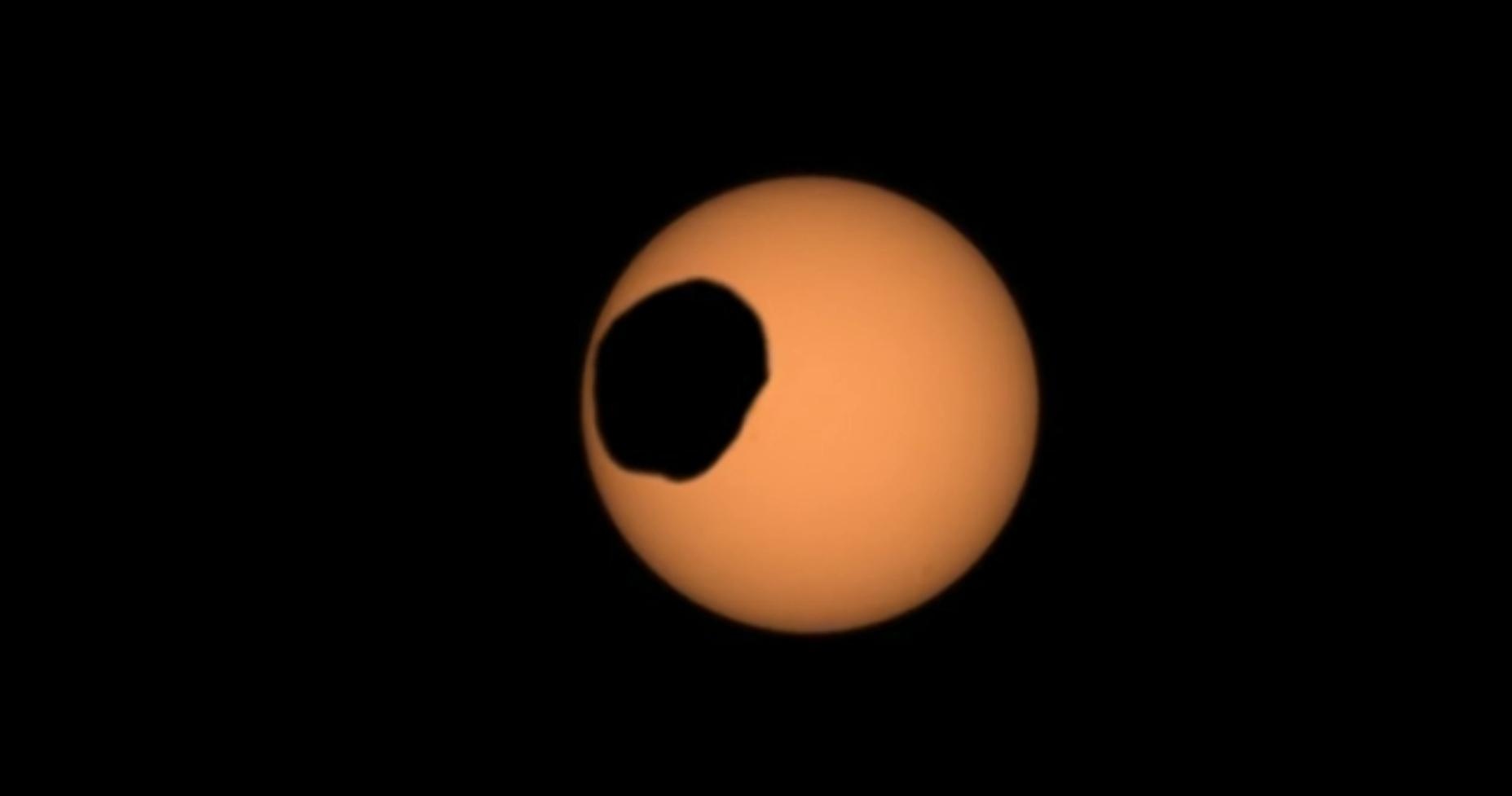
NASA’s Perseverance rover is busy exploring the Martian surface and collecting samples for eventual return to Earth. But the rover recently took some time to gaze upward and observe the heavens. Using Mastcam-Z, the rover’s primary science camera, Perseverance captured Phobos, Deimos, and Mercury as they transited in front of the Sun.
Continue reading “Perseverance Sees Phobos, Deimos and Mercury Passing in Front of the Sun”Odyssey Gives Us a Cool New View of Mars

Chances are that you’ve seen images of Earth from space, thanks to the astronauts aboard the International Space Station (ISS), who regularly share stunning photos of our planet. These images provide us regularly with breathtaking views of cities, oceans, storms, eruptions, clouds, the curvature of the planet, and the way the atmosphere glows against the horizon. Thanks to NASA’s Mars Odyssey Orbiter, which has been in orbit for over 22 years, we now have an equally breathtaking view of Mars from orbit that captured what its curvature and atmosphere look like from space.
Continue reading “Odyssey Gives Us a Cool New View of Mars”JAXA’s Ambitious Mission to Phobos Will Even Have European-Built Rover
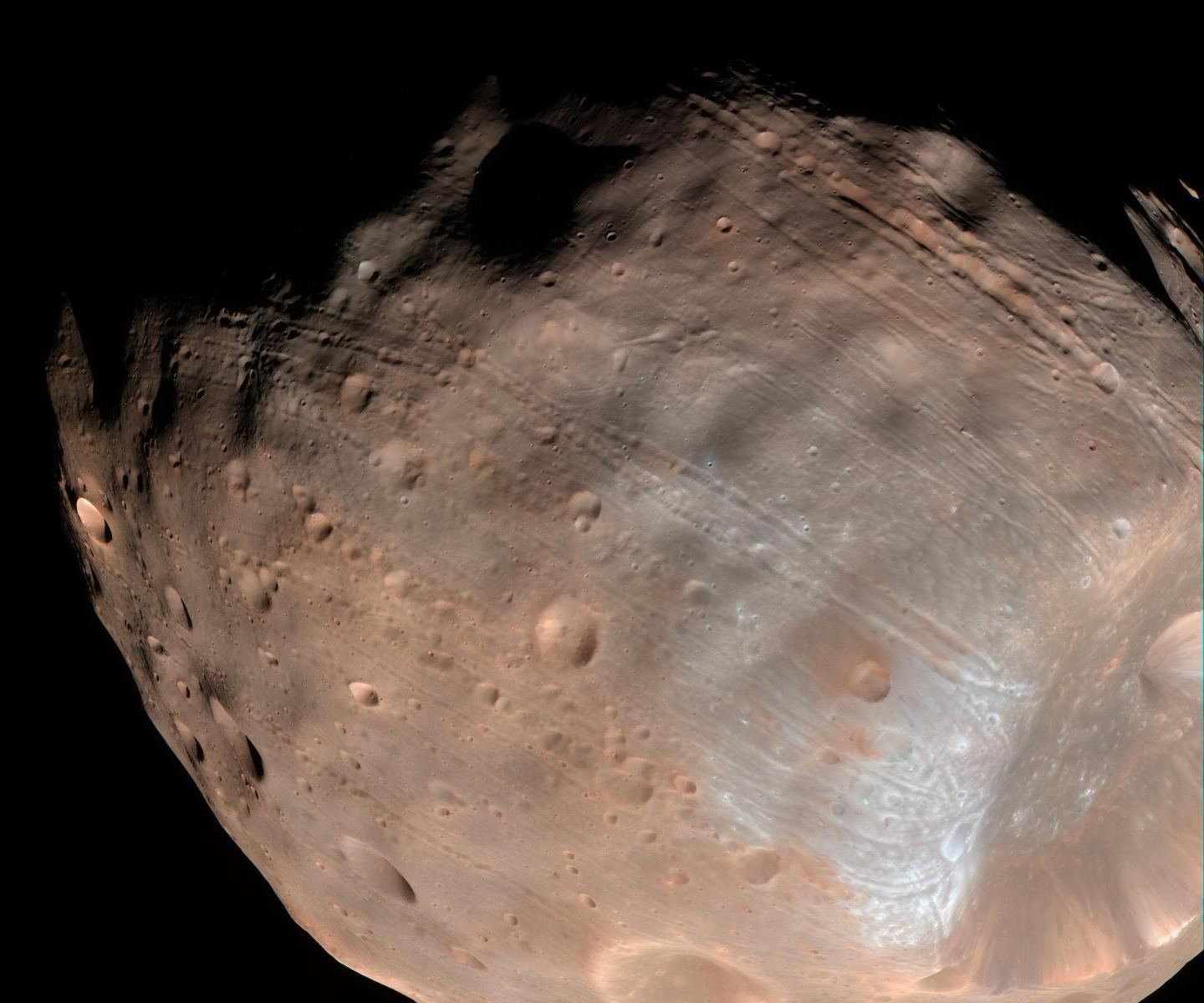
Japan and Germany have a history of collaboration in scientific and technological endeavours. The countries have a Joint Committee on Cooperation in Science Technology that has met many times over the decades. Both countries have advanced, powerful economies and sophisticated technological know-how, so it makes sense they’d collaborate on scientific activities.
This time, their cooperation concerns a small, potato-shaped chunk of rock: Mars’ moon Phobos.
Continue reading “JAXA’s Ambitious Mission to Phobos Will Even Have European-Built Rover”Mars Express Watched Deimos Pass in Front of Jupiter and its Moons
That’s no moon … wait … yes, it is, and more!
ESA’s Mars Express has captured an unusual and rare occultation, all from its vantage point in orbit of Mars. The spacecraft’s orbit brought it to the right place where it could witness the moment Mars’ small moon Deimos passed in front of Jupiter and its four largest moons. Scientists say that celestial alignments like these enable a more precise determination of the Martian moons’ orbits.
Continue reading “Mars Express Watched Deimos Pass in Front of Jupiter and its Moons”New Pics of Phobos From China’s Tianwen-1 Orbiter
Two fundamental factors affect all astrophotography – timing and location. If a camera happens to be at the right place at the right time, it can capture images that have never been seen before. And with the proliferation of cameras throughout the solar system, more and more novel photos will be captured at an ever-increasing frequency. China’s Tianwen-1 probe added to that novel collection to celebrate its second anniversary by taking a shot of Mars’ moon Phobos.
Continue reading “New Pics of Phobos From China’s Tianwen-1 Orbiter”Japan’s Upcoming Mission Will Use a Vacuum to Get its Sample From Phobos
JAXA, the Japanese Aerospace Exploration Agency, is carving out a niche for itself in sample-return missions. Their Hayabusa mission was the first mission to sample an asteroid when it brought dust from the asteroid Itokawa to Earth in 2010. Then its successor, Hayabusa 2, brought back a sample from asteroid Ryugu in 2020.
Now JAXA has the Martian moon Phobos in its sights and will send a spacecraft to sample it as soon as 2024. The mission is called Martian Moons eXploration (MMX), and it’ll use a pneumatic vacuum device to collect its samples.
Continue reading “Japan’s Upcoming Mission Will Use a Vacuum to Get its Sample From Phobos”Wow! Perseverance Sees a Solar Eclipse on Mars
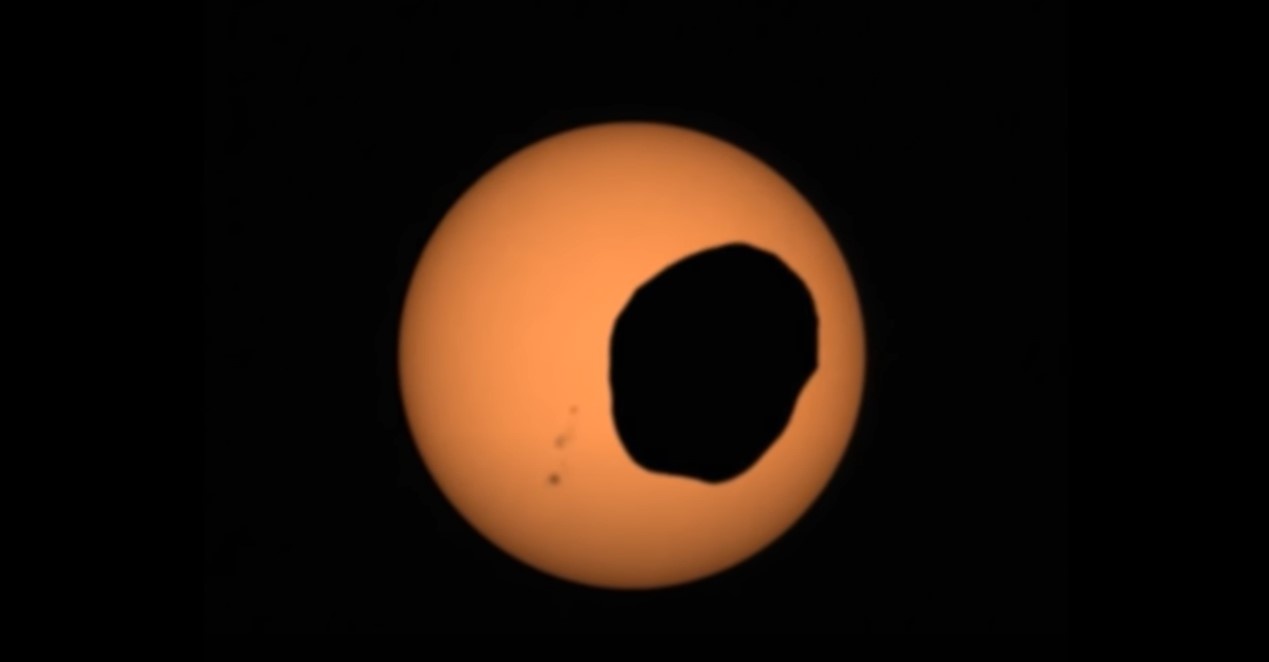
Imagine standing on Mars, and seeing this with your own eyes.
Continue reading “Wow! Perseverance Sees a Solar Eclipse on Mars”


